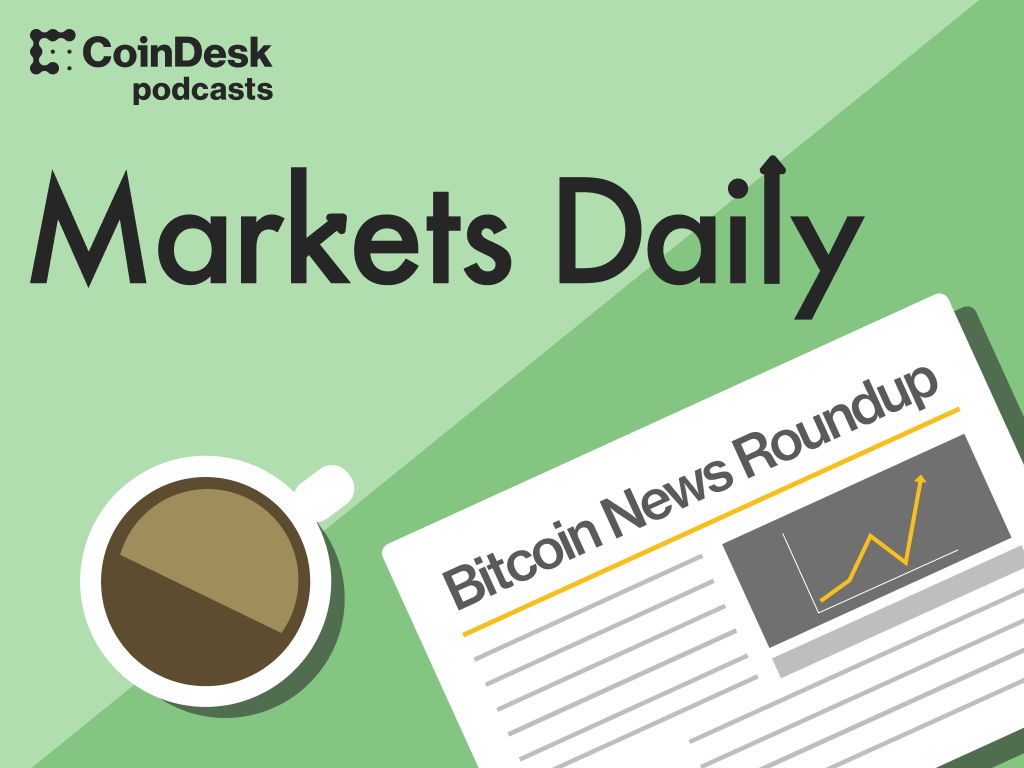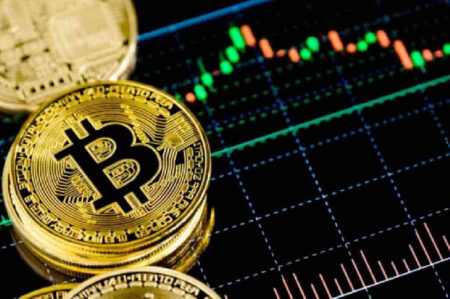Today’s episode is sponsored by CME Group.
To get the show every day, follow the podcast here.
Today’s Stories:
BitcoinShrooms: An Ordinals Auction
‘Bitcoin NFT’ Hysteria Comes to Sotheby’s as Super-Mario-Style Mushroom Character Tops $200K
From our sponsors:
CME Group Cryptocurrency futures and options provide market-leading liquidity for bitcoin and ether trading. These cash-settled contracts give full exposure to crypto performance without the hassle of holding the physical position. No digital wallet? No problem. Trade nearly 24/7 in a transparent, CFTC-regulated market. Visit cmegroup.com/crypto to learn more.
Disclaimer:
This communication is not directed to investors located in any particular jurisdiction and is not intended to be accessed by recipients based in jurisdictions in which distribution is not permitted. The information herein should not be considered investment advice or the results of actual market experience. Past results are not necessarily indicative of future performance. Trading derivatives products involves the risk of loss. Please consider carefully whether futures or options are appropriate to your financial situation.
This episode was hosted by Noelle Acheson. “Markets Daily” is executive produced by Jared Schwartz and produced and edited by Eleanor Pahl. All original music by Doc Blust and Colin Mealey.
Audio Transcript: This transcript has not been edited and may contain errors.
It’s Monday, December 18th, 2023 and this is Markets Daily from CoinDesk. My name is Noelle Acheson, CoinDesk collaborator and author of the Crypto is Macro Now newsletter on Substack. On today’s show we’re talking about market moves, bitcoin transactions, U.S. GDP strength and more. So you don’t miss an episode, be sure to follow the podcast on your platform of choice, and turn on notifications. And just a reminder, CoinDesk is a news source and does not provide investment advice.
Now, a markets roundup.
Crypto markets are weak today as markets start to quieten down ahead of the holidays. According to CoinDesk Indices, at 9am eastern time this morning, bitcoin was trading down 1.2% over the past 24 hours, at 41,338 dollars. Ether was down 2.4%, trading at 2,154 dollars.
Elsewhere, Polygon was down 6%, Avalanche and Dogecoin were down 5%, and Polkadot and Cardano were down 4%.
In macro matters, today I want to focus on the divergent U.S. economy. We know that GDP growth surprised to the upside for the third quarter. We also know that the latest retail sales figures also beat estimates.
But that does not mean the U.S. economy is doing really well. The strength is skewed, heavily weighted in the services sector. I’ll get to what that means for what’s ahead in a moment, but first, let’s look at Friday’s release of the S&P Global Purchasing Managers’ Index for December. Known as the PMI, this index is created from surveys of business purchasing managers in the manufacturing and services industries, and gives a good idea of the activity growth seen from the ground, from actual businesses.
The manufacturing index dropped by more than expected, down to 48.2 vs consensus forecast of 49.3, and lower than November’s reading of 49.4. Anything below 50 represents a contraction in activity. Unless there is an unusually strong upward revision in the final figures, this will be the sixth monthly contraction, and the lowest reading since July.
So, manufacturing in the U.S. is weak and getting weaker. Not much of a surprise there.
Yet the services data tells a different story. This index came in much stronger than expected: 51.3 vs the consensus forecast of 50.6. November’s read was 50.8. In almost a mirror image of the manufacturing data, the services index reached its highest reading since July.
In Friday’s episode I mentioned that the Atlanta Fed has upped its prediction for Q4 U.S. GDP growth from 1.2% to 2.6%. The PMI figures tell us where that additional growth is coming from: the services sector, which accounts for around 70% of U.S. GDP.
And yet the market thinks the Federal Reserve is about to start cutting interest rates. In coming weeks, keep an eye on services sector data – when we see that start to weaken, that will set a different economic tone.
In stocks, U.S. markets were more muted on Friday as Fed officials have pushed back on the market excitement about imminent rate cuts. The Nasdaq was up a third of a percent, the Dow Jones up an eighth while the S&P 500 closed flat on the day. Despite the muted performance, the U.S. stock market closed Friday its longest streak of weekly gains in six years. Futures this morning are pointing to a mixed opening.
Sentiment was also soft in Europe on Friday, with the DAX and the Eurostoxx 600 indices flat and the FTSE 100 down almost one percent. So far this morning, the FTSE 100 is recovering some ground, up six tenths, while the other main indices are flat to slightly down.
And markets were weak in Asian trading today. Japan’s Nikkei index fell six tenths of a percent, the Shanghai Composite dropped four tenths and the Hang Seng index lost almost one percent.
In commodities, oil prices are climbing on concerns about supply chain issues in the Red Sea. Several shipping companies have said they will reroute containers around Africa after Houthi rebels based in Yemen have been attacking ships with missiles and drones. Earlier today, the Brent crude benchmark was up 2.3% on the day, trading at 78 dollars and 78 cents a barrel.
Gold is subdued today, trading at 2,022 dollars an ounce.
Stay with us – after the break we’re going to look at what bitcoin fees are telling us.
Welcome back!
In today’s show, we’re going to look at what the recent surge in bitcoin transaction fees tells us about the network’s censorship resistance.
If you’ve tried to move bitcoin over the past few days, you’ll have noticed that transaction fees are getting painful again. Average transaction fees over the past seven days are now above $23 dollars, which makes it uneconomical to send small amounts. The last time they were this high was in May 2021.
This is both good news and bad.
The bad news is that it dampens Bitcoin utility in the short-term by suppressing the network’s use for small payments. Layer-2 networks such as Lightning are an alternative that should find more traction in coming months, especially if main chain fees remain high. But the Lightning network capacity is currently lower than at the start of the year.
High fees could also end up dissuading retail participation in the market. I know some of you have sent in questions about this. You may have heard the phrase “stacking sats”, which referred to the investment strategy of buying small amounts of bitcoin here and there. Sat is short for Satoshi which is the name given to the smallest divisible unit of bitcoin – each bitcoin can be split into 100 million satoshis. Well, with fees this high, stacking sats doesn’t make much sense.
There is a positive side to this, though. The recent surge in transaction fees signals more network activity of the kind happy to pay higher fees. This is great for miners, especially with the upcoming halving, expected around April of next year, which will reduce the number of bitcoin issued as rewards by 50%.
Miners making more money is positive for two reasons:
One – the greater the number of profitable miners on the network, the more distributed and robust the network’s security. With successive halvings, a risk to the network has been that miners would get pushed off due to profitability issues. Higher fees should help to calm those concerns.
Two – miners making more profit means they don’t need to sell as much BTC to cover operating costs. This reduces market selling pressure.
There’s another way the transaction fee spike is good news, and that is the rekindling of the debate of what bitcoin even is. The fee spike is not because of a flood of transactions moving large amounts of bitcoin. Volume throughput on the network is climbing, but not by much, it’s not anywhere near previous high levels.
Rather, the spike is to do with the type of transaction. This is diversifying, as Bitcoin-based NFTs known as Ordinals are becoming more popular. Last week, Sotheby’s held its first auction of NFTs created with the Ordinals protocol – three pixelated images from the “BitcoinShrooms” collection attracted a total of around $450,000, roughly five times the highest estimate. We’ll put a link to the Sotheby’s page in the show notes if you want to check them out.
Now, popularity of ordinals has attracted criticism from those who insist Bitcoin was not created for NFTs and the network should not be clogged with “frivolous” transactions. Some have gone as far as to call these transactions “spam”.
And yet these critics overlook the fact that banning Ordinals or similar transactions would be tantamount to censorship, which is precisely what Bitcoin was created to prevent.
Bottom line, heated debates like this end up highlighting Bitcoin’s resilience, decentralization and censorship resistance. However loud the critics may get, bitcoin will be what the market wants it to be, and if developer ingenuity creates products that consumers want, then great – especially if it means better financial health for the miners responsible for maintaining network security.
Most of all, this debate highlights that Bitcoin is an evolving technology, and that the evolution that could lie ahead for the network gives its overall value considerable upside. What’s more, it reminds us that no one particular faction gets to decide for the whole community. Therein lies Bitcoin’s resilience.
Read the full article here









